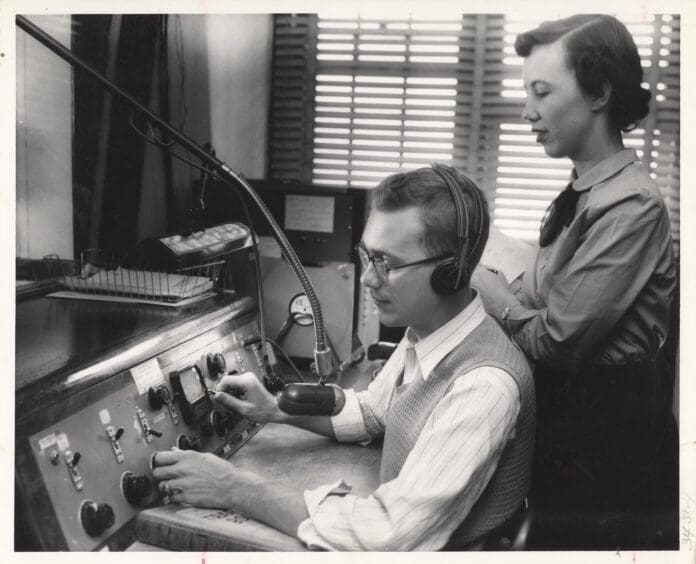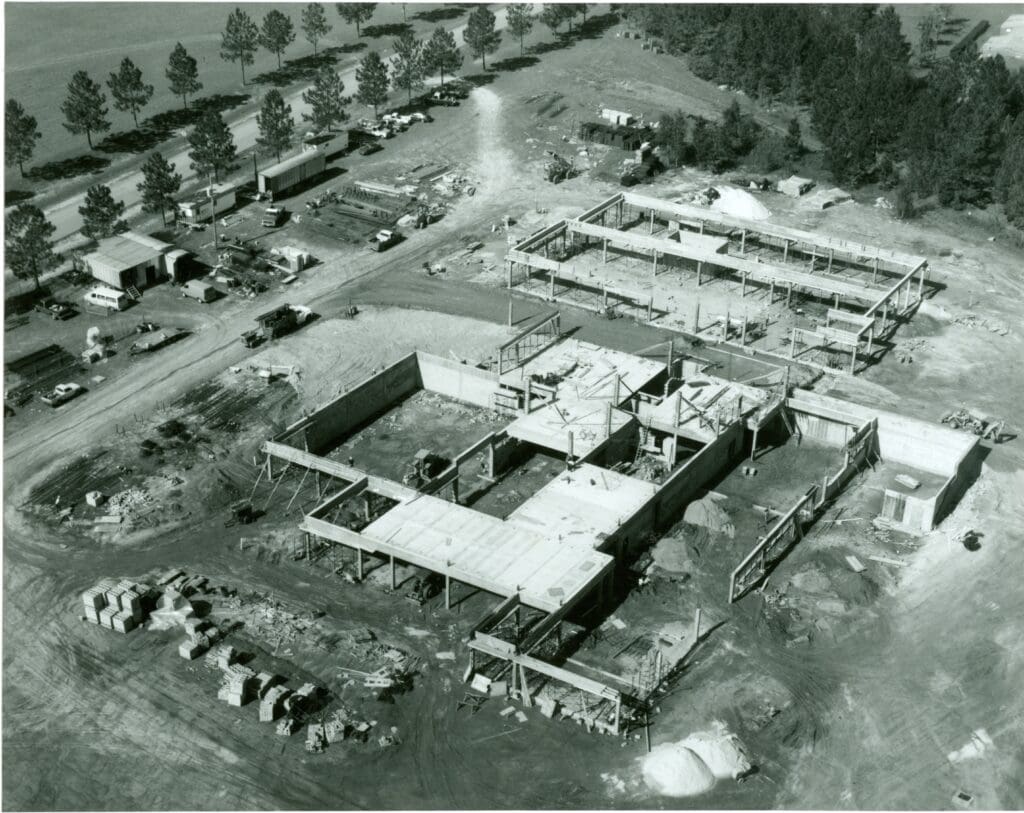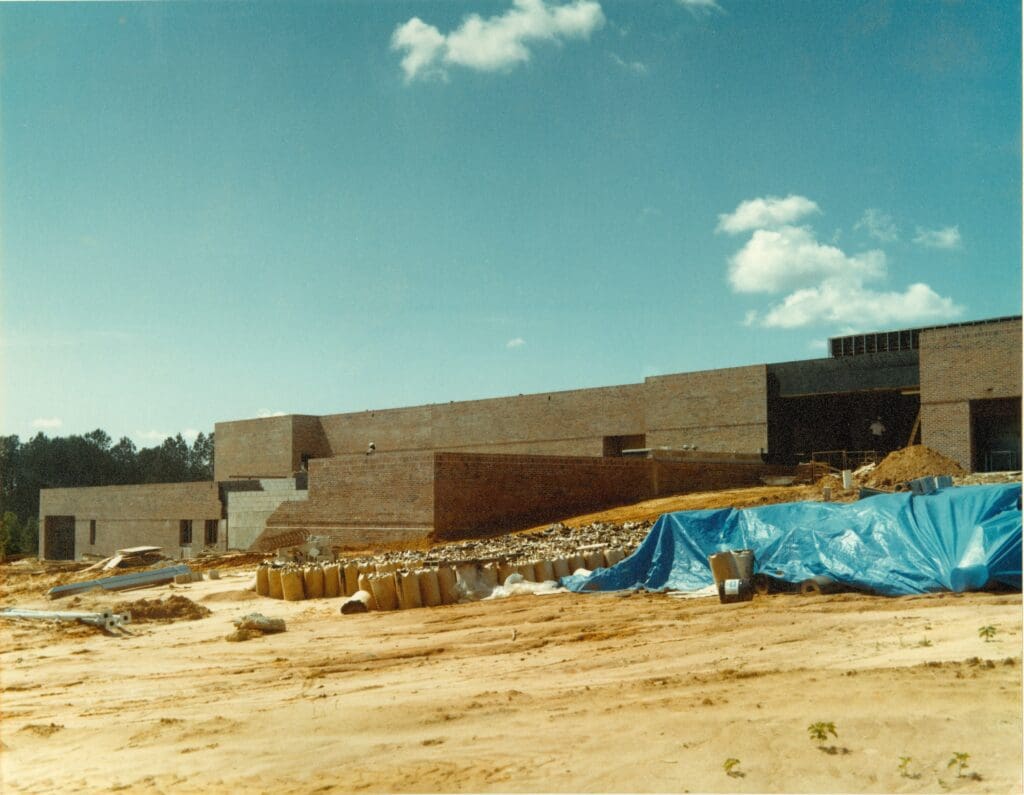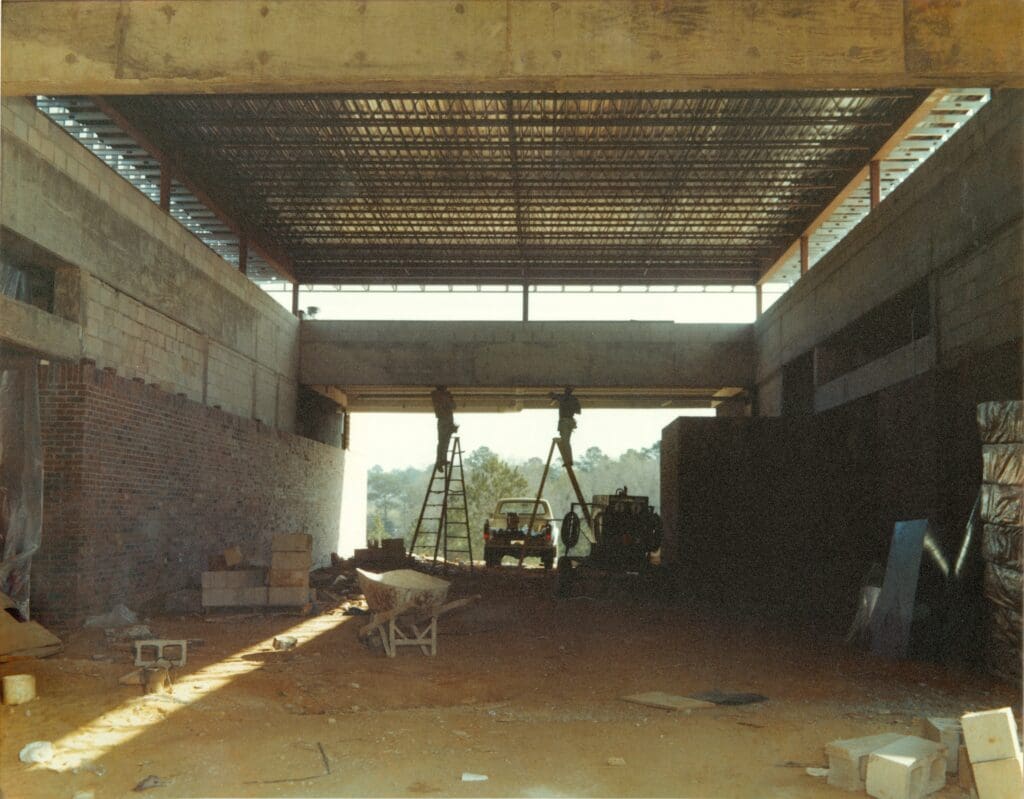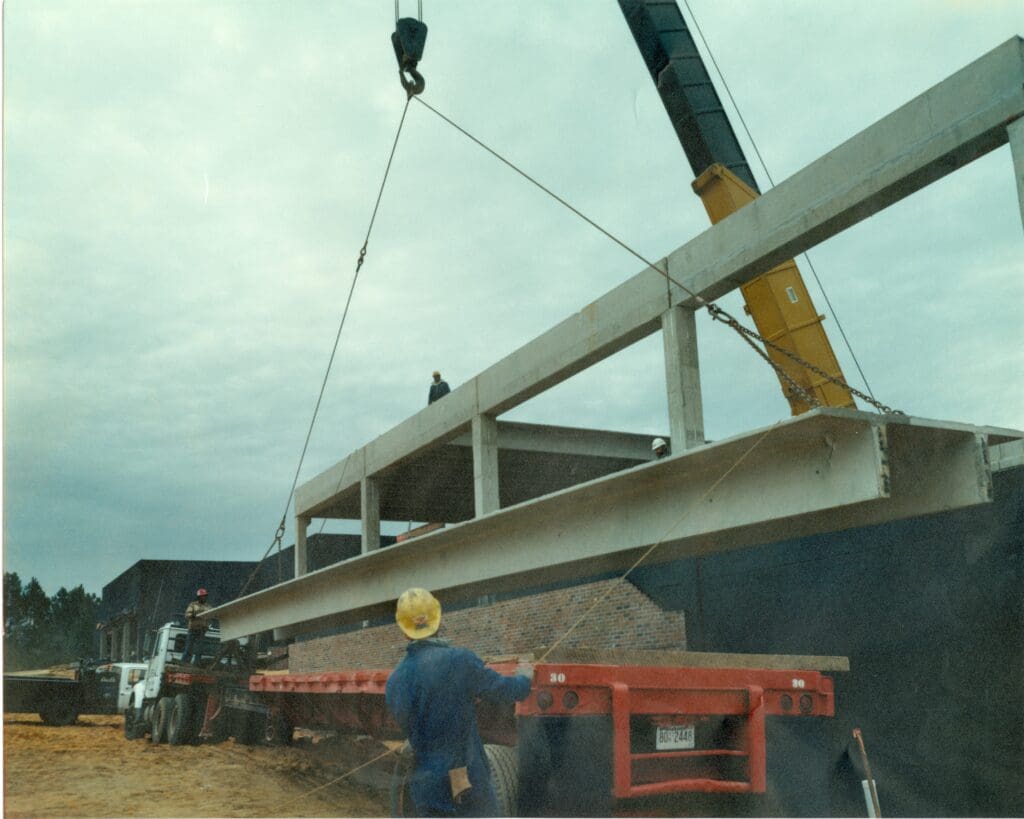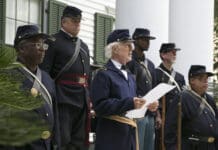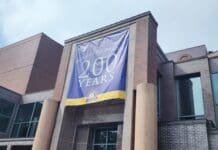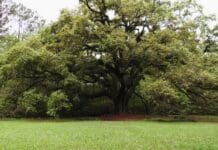“Good evening, this is Station WFSU, the Seminole Broadcasting Association, signing on at 660 on your dial. For the next two and half hours your campus radio station will bring you programs by FSU, for FSU. Stand by for the Voice of the Seminole.”
First words said on WFSU Radio, January 21, 1949, at 8:30 pm.
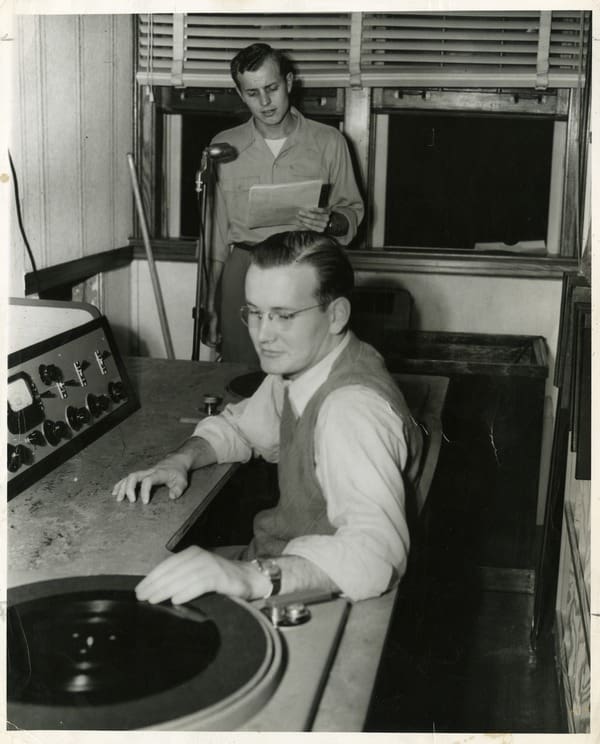

April 5, 1948
Florida State University Men’s Government Association held a forum about what to do with the remaining $2,700 in their Tallahassee Branch of the University of Florida Recreation Fund. Afterward, 49 voted for a radio station and 26 voted for a roller-skating rink. A campus referendum is held on the issue in May.
May 9, 1948
The decision between a radio station and a roller-skating rink is put to a vote among the men at Florida State University. The breakdown of the 617 votes was as follows: 439 chose the radio station, 106 wanted a skating rink, and 72 didn’t want either. Work begins on creating a radio station.
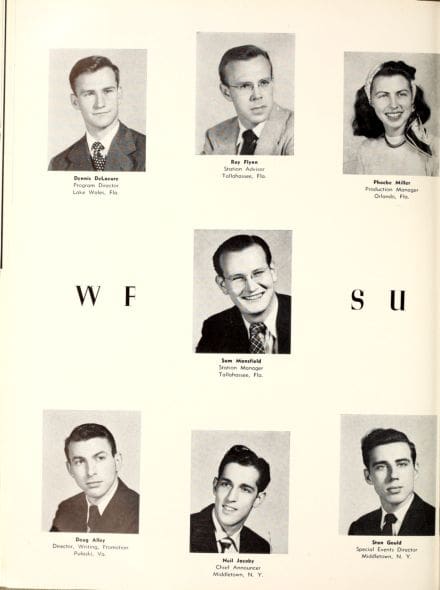

December 1, 1948
FSU appoints Roy Flynn as WFSU Radio’s Public Relations Director and Student Advisor. Flynn had been the former educational director for WAPI in Birmingham, Alabama. Other than Flynn, the rest of the staff of WFSU radio was made up entirely of students. When the call went out to staff the station, Roy Flynn said 720 students applied. A total of 55 students were selected. The Seminole Broadcasting Association was the governing body of the station.
January 21, 1949
WFSU 660 AM broadcasts on the air for the first time. The “wired-wireless” station started with three watts and was initially on each night from 8:30 to 11 pm. The first studio was built in room 404 of the Rowena Longmire Alumnae Building by an associate professor and two students from the Physics department. The “Voice of the Seminole” was broadcast to the FSU campus only.
1951
The first remote broadcast is done from Florida State University’s Suwannee dining room. WFSU carried the music of Georgia Bee and his orchestra. The mobile unit was called “The Little Red Wagon” and used a child’s red wagon to transport the equipment.
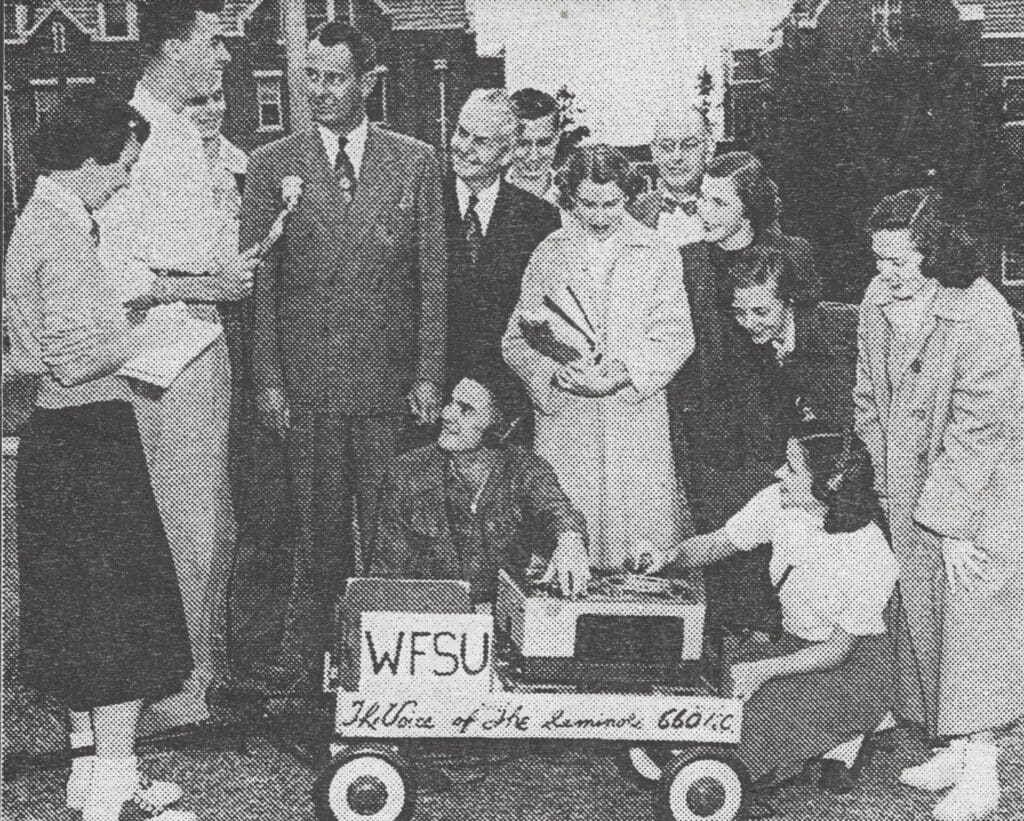

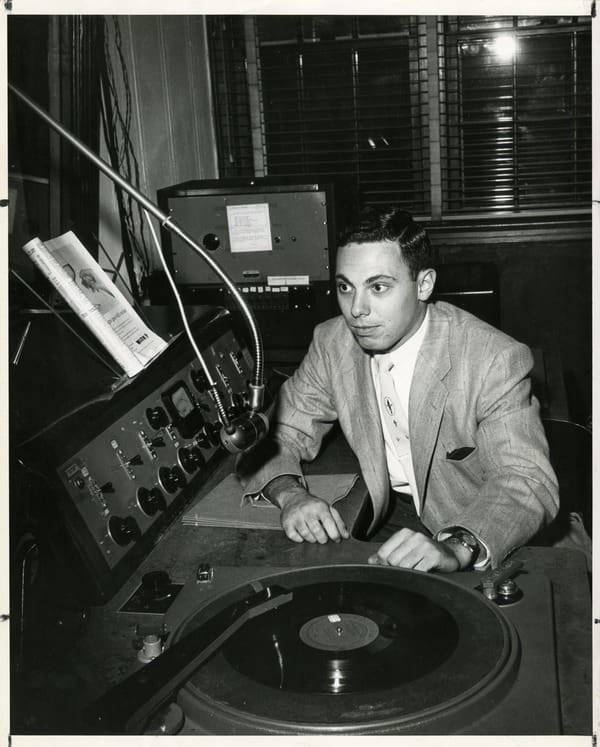

1952
WFSU radio became a member of the Intercollegiate Broadcasting Association.
April 30, 1953
An official with the Federal Communications Commission, which regulates broadcast signals, entered the WFSU radio studios and ordered the station to stop broadcasting. The FCC said that the low-wattage station was operating beyond its assigned borders which at the time was the campus of Florida State University.
In a letter written by Roy Flynn to Susan Law in November 1982, Flynn described what happened that day:
I got an urgent message to go quickly to the station. I found an
FCC man there threatening a student DJ, saying “Go off now!” And
the kid was saying, “Can’t I at least let the record end and tell
the audience what’s happening?” And the FCC man said, “It will go
hard on you if you do.” So the boy faded out the record. End of
campus station.
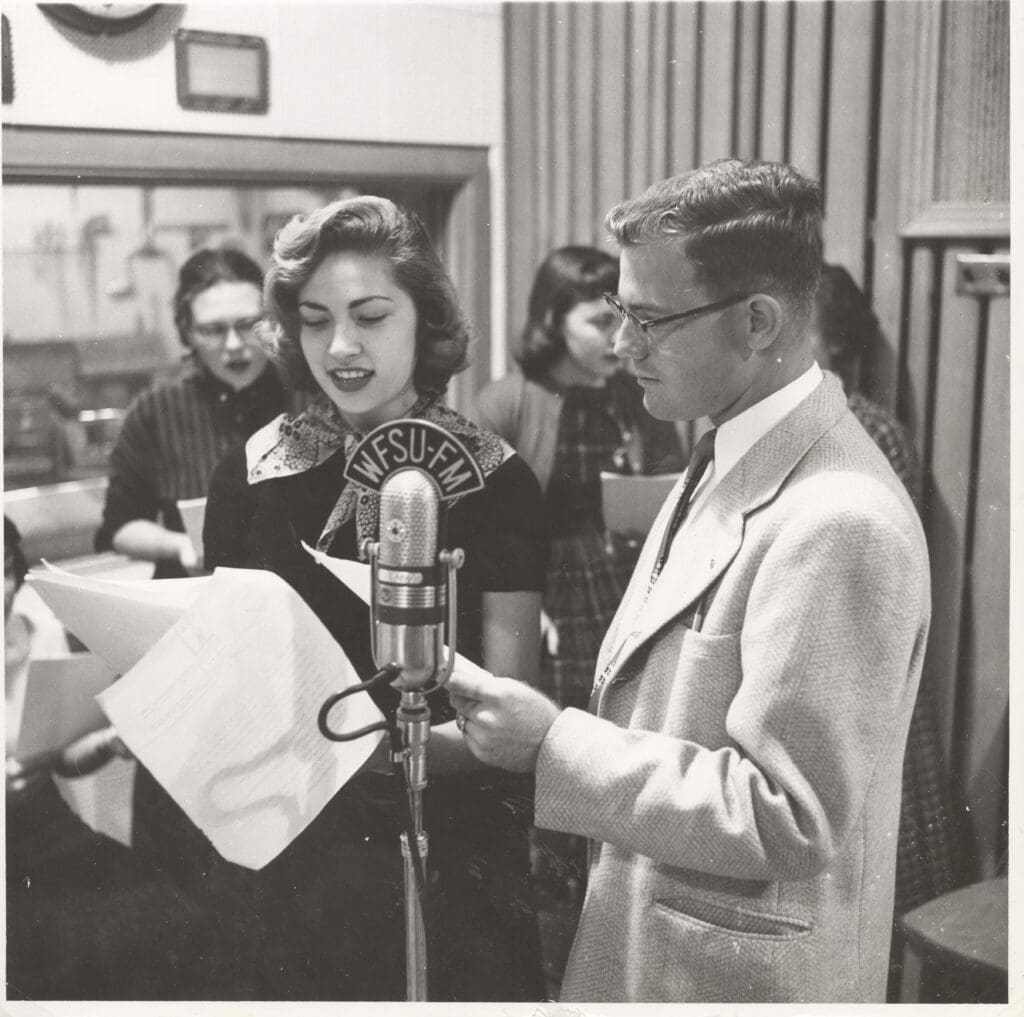

October 9, 1953
FSU received notice that the FCC has approved the University’s application to become a low-power FM Educational license.
May 19, 1954
WFSU Radio returns to the air on 91.5 FM. Now a ten-watt FM station, it operated out of room 115 in the Music building. In 1988, the Music Building was named the Kursteiner Music Building after the former Dean Karl Kursteiner. According to Roy Flynn, at the time the new and improved WFSU radio was the only FM station broadcasting in north Florida and South Georgia.
1954
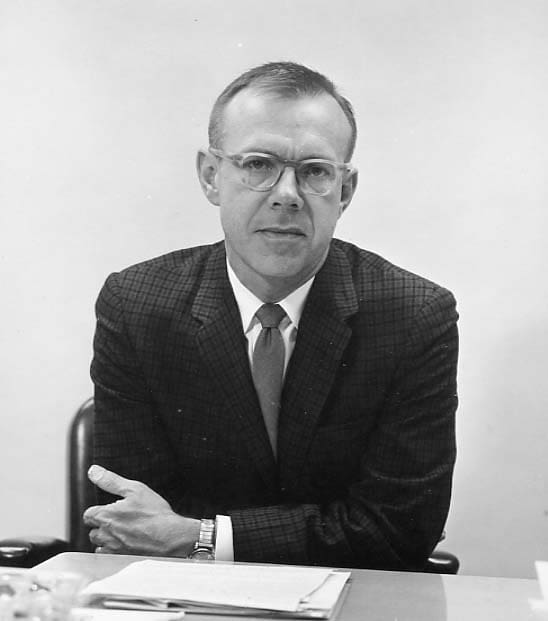

FSU Music Associate Professor Tommy Wright, who had co-created the FSU Fight Song in 1950, was named the Music Director at WFSU-FM.
September 1954
FSU named Roy Flynn the Director of Radio and Television at Florida State University. The addition of television to Flynn’s title came 5 years before the WFSU television station went on the air, but they did work with Tallahassee station WCTV and WMBR-TV in Jacksonville. Flynn and other FSU personnel had already produced a TV program called “The Professor and the Problem” for those stations for several years.
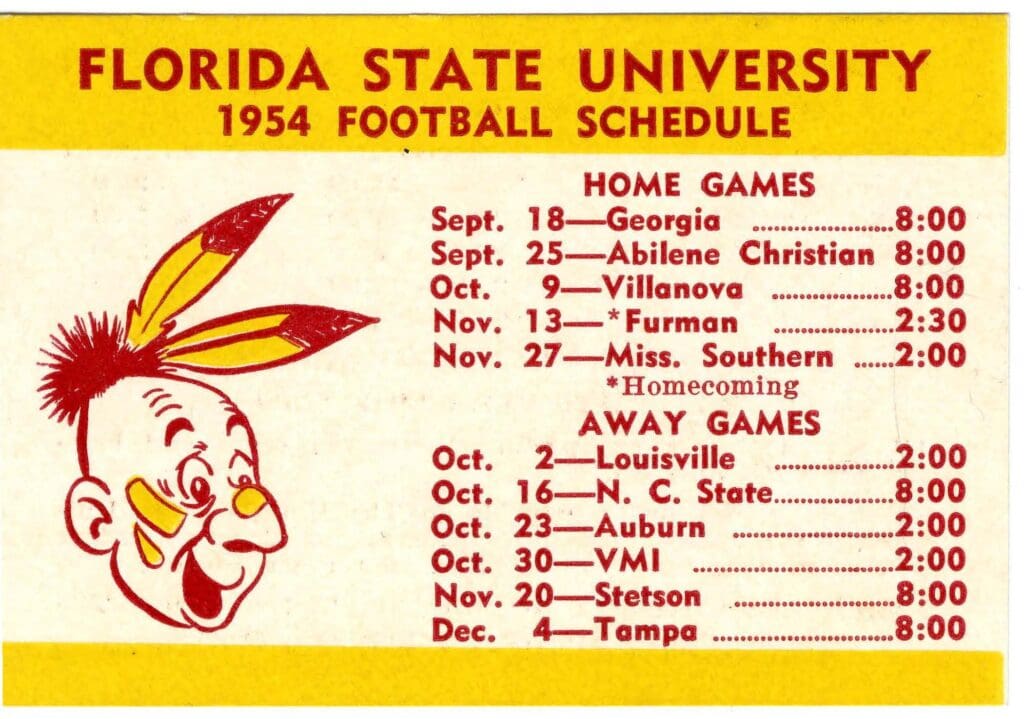

September 25, 1954
WFSU-FM’s first broadcast of FSU football home games started with the Abeline-Christian game on this day. The station had the exclusive rights to carry the game and brought listeners to the channel. Director Roy Flynn said the purchase of FM radio receivers in the area increased because of the games on WFSU-FM.
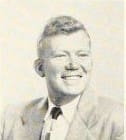

Jim Kirk was the announcer of these initial games. Kirk was a 1952 FSU graduate who had received the University’s first degree in speech with a specialty in broadcasting. Decades later, Kirk became a radio station owner in central Florida and in 1996 he donated his large collection of almost 300 antique radios and TVs to WFSU to create a museum at the Public Broadcast Center located near the FSU Golf Course)
July 1958
WFSU’s FM power increased from 10 to 1000 watts.
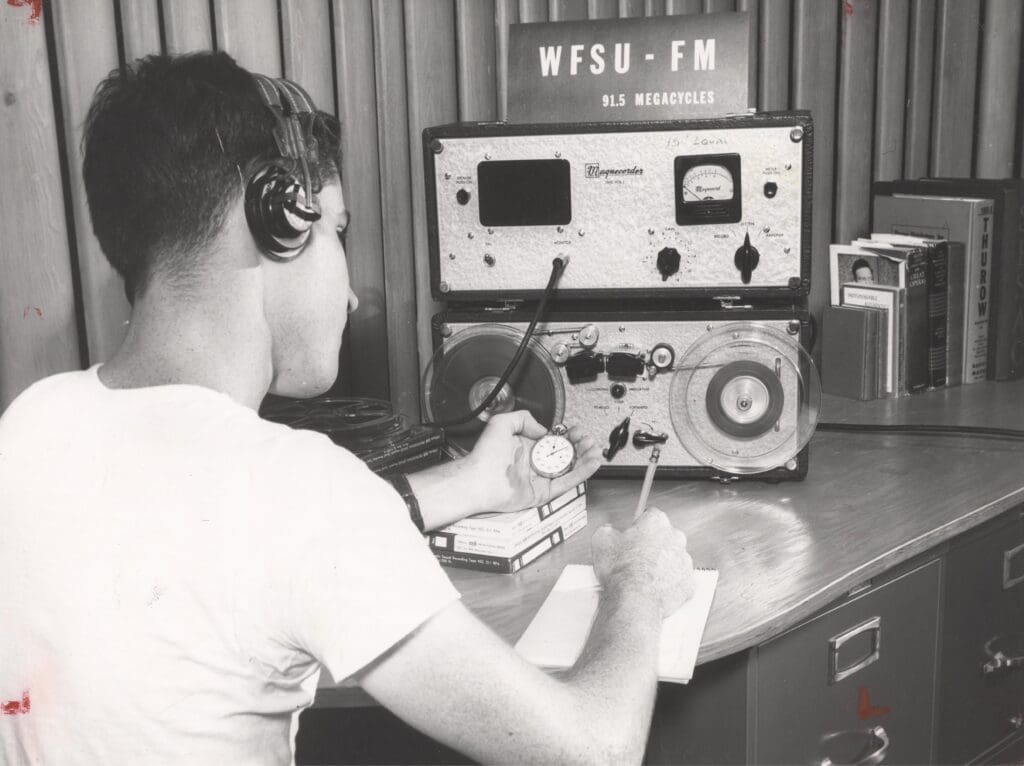

December 1, 1962
WFSU-FM began broadcasting the Metropolitan Opera live from New York. The first performance was Guiseppe Verdi’s “Ernani.”
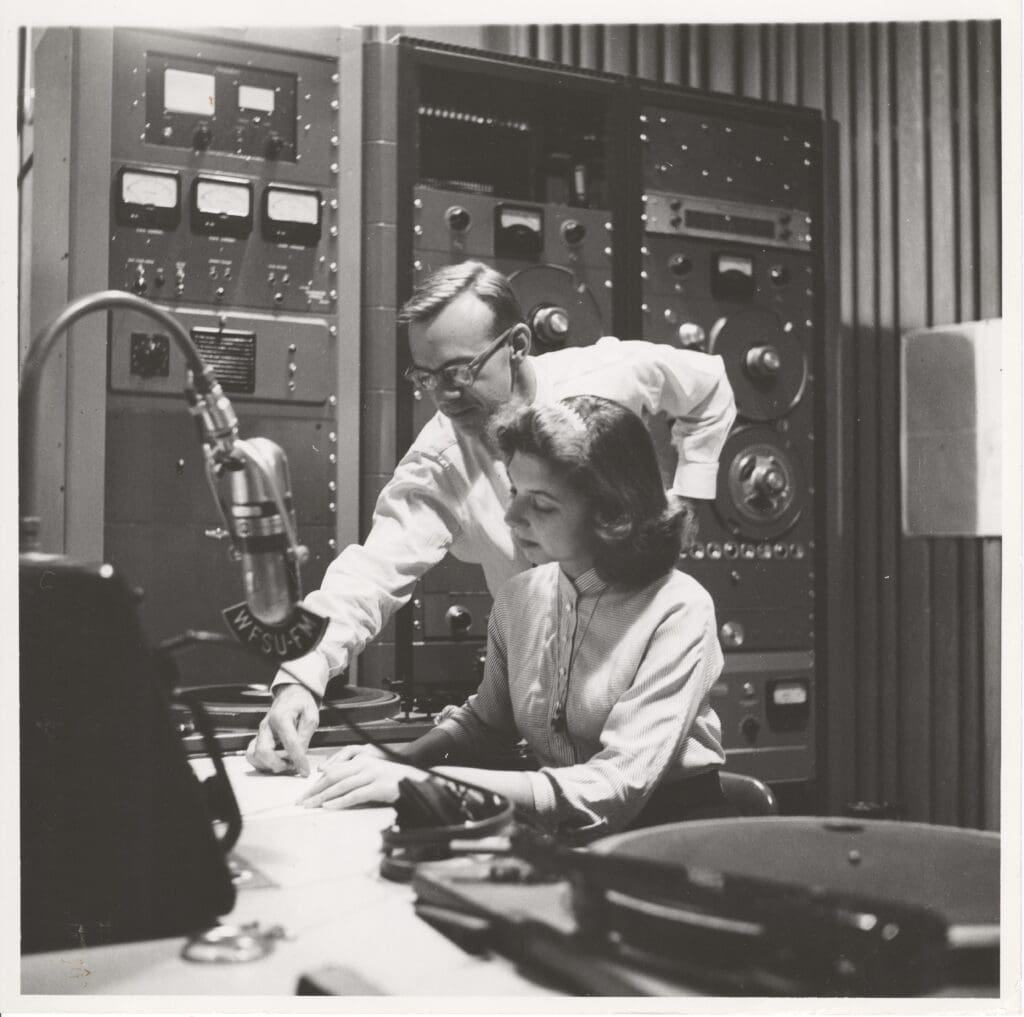

1966
WFSU-FM broadcasts in stereo for the first time.
November 7, 1967
President Lyndon B. Johnson signed the Public Broadcasting Act, creating the Corporation for Public Broadcasting.
February 26, 1970
The Corporation for Public Broadcasting established National Public Radio. WFSU-FM was one of the 90 charter member stations.
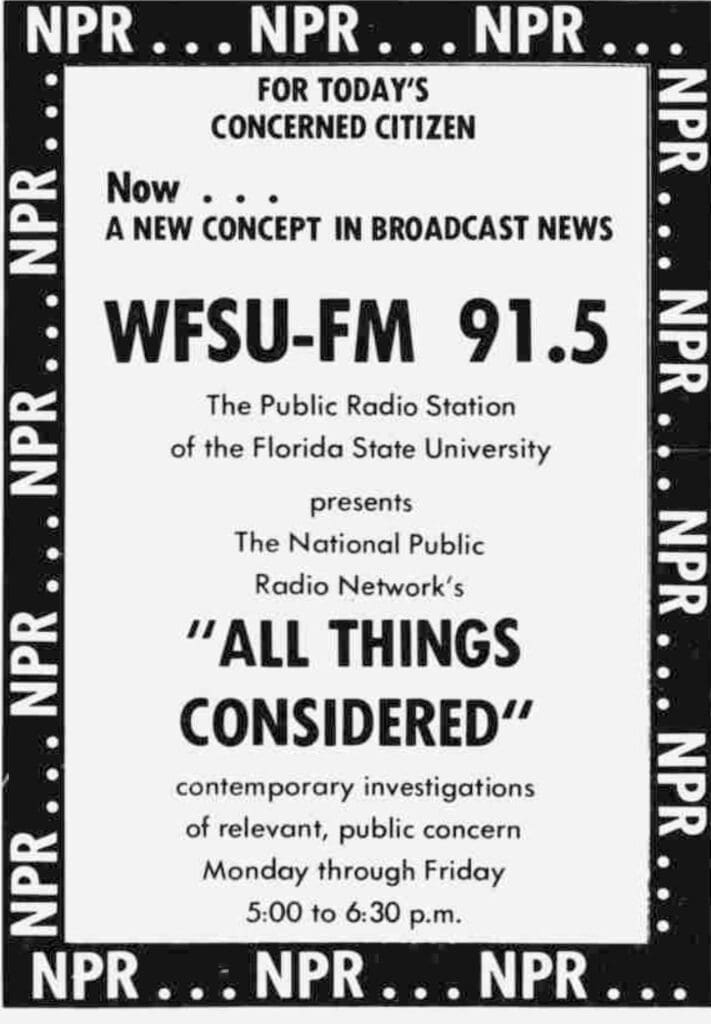

April 19, 1971
National Public Radio broadcast its first program: live coverage of U.S. Senate deliberations on the Vietnam War.
May 3, 1971
NPR broadcasts the first episode of their long-running program, “All Things Considered.”
April 1972
WFSU-FM moves into new, modern facilities on the 4th floor of the Diffenbaugh building on Florida State University Campus. The cost of this studio was $250,000.
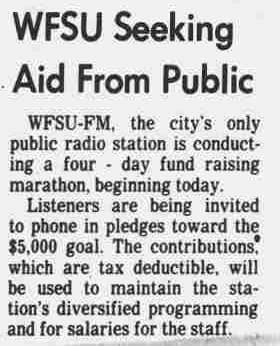

March 29, 1974
The first WFSU-FM pledge drive took place over four days. They raised $1500.
May 6, 1974
WFSU-FM broadcasts the Florida Board of Regents meeting for the first time.
September 1, 1974
WFSU-FM implemented a 24-hour per day schedule for the first time.
1975
WFSU-FM begins to air the Tallahassee City Commission meetings.
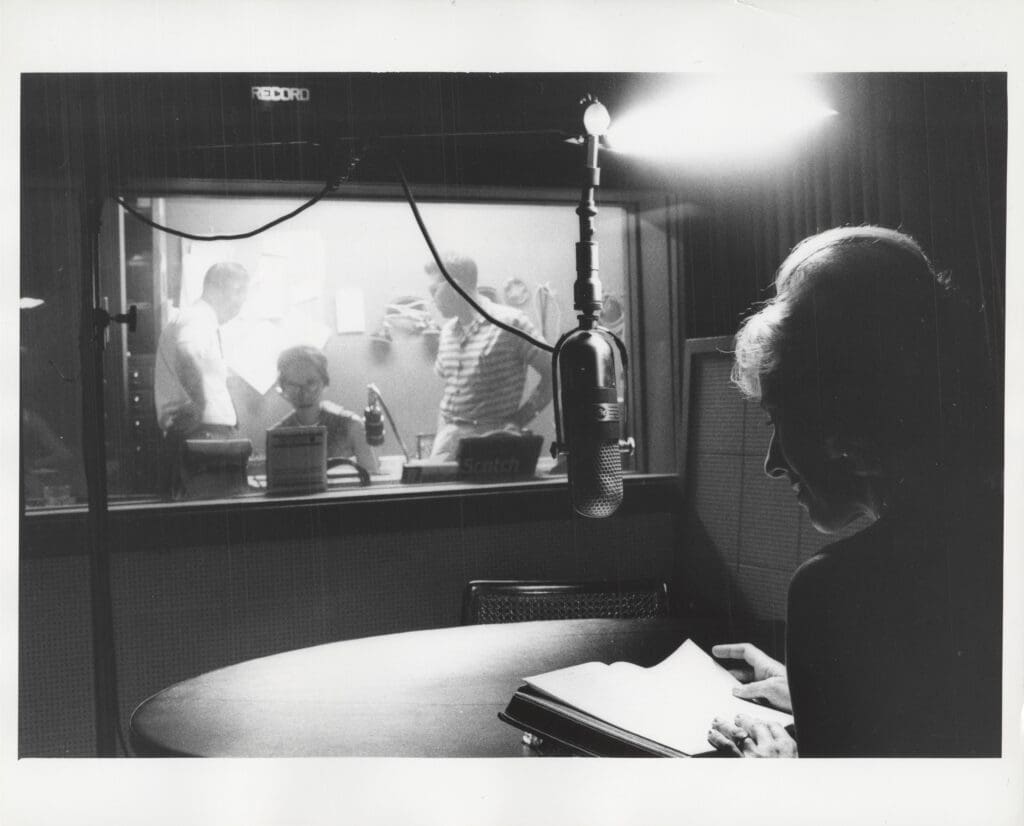

1975-1978
Florida State University’s Diffenbaugh Building is gutted and reconstructed. However, because WFSU-FM’s studio was still new, that area continued to operate during the construction. WFSU staff, students, and other volunteers had to climb exposed outside steel steps to reach the studio during the rehabilitation of the building.
May 18, 1975
Second on-air fundraising campaign for WFSU-FM. It lasted seven days and raised $4900.
March 1976
The Department of Education gave WFSU-FM the contract to reactivate and operate the Florida Public Radio Network for the 1976 Legislative session. Formerly in Jacksonville, FPRN provided statewide coverage of the Florida Legislature and State Government. FPRN’s Capital Report aired Monday-Friday during the session and all 11 Florida public radio stations at the time carried it.
May 1976
WFSU-FM boosts its power to 50,000 watts.
March 21, 1978
The 15-member Corporation for Public Broadcasting board held its meeting in Tallahassee as part of a series of meetings at cities around the country.
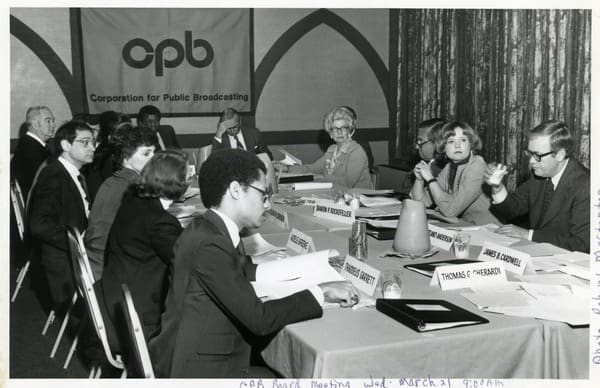

November 5, 1979
Morning Edition, with first host Bob Edwards, debuts on National Public Radio.
1980
WFSU-FM became the only state-owned station linked to the NPR Interconnection System which allowed satellite transmissions throughout the nation.
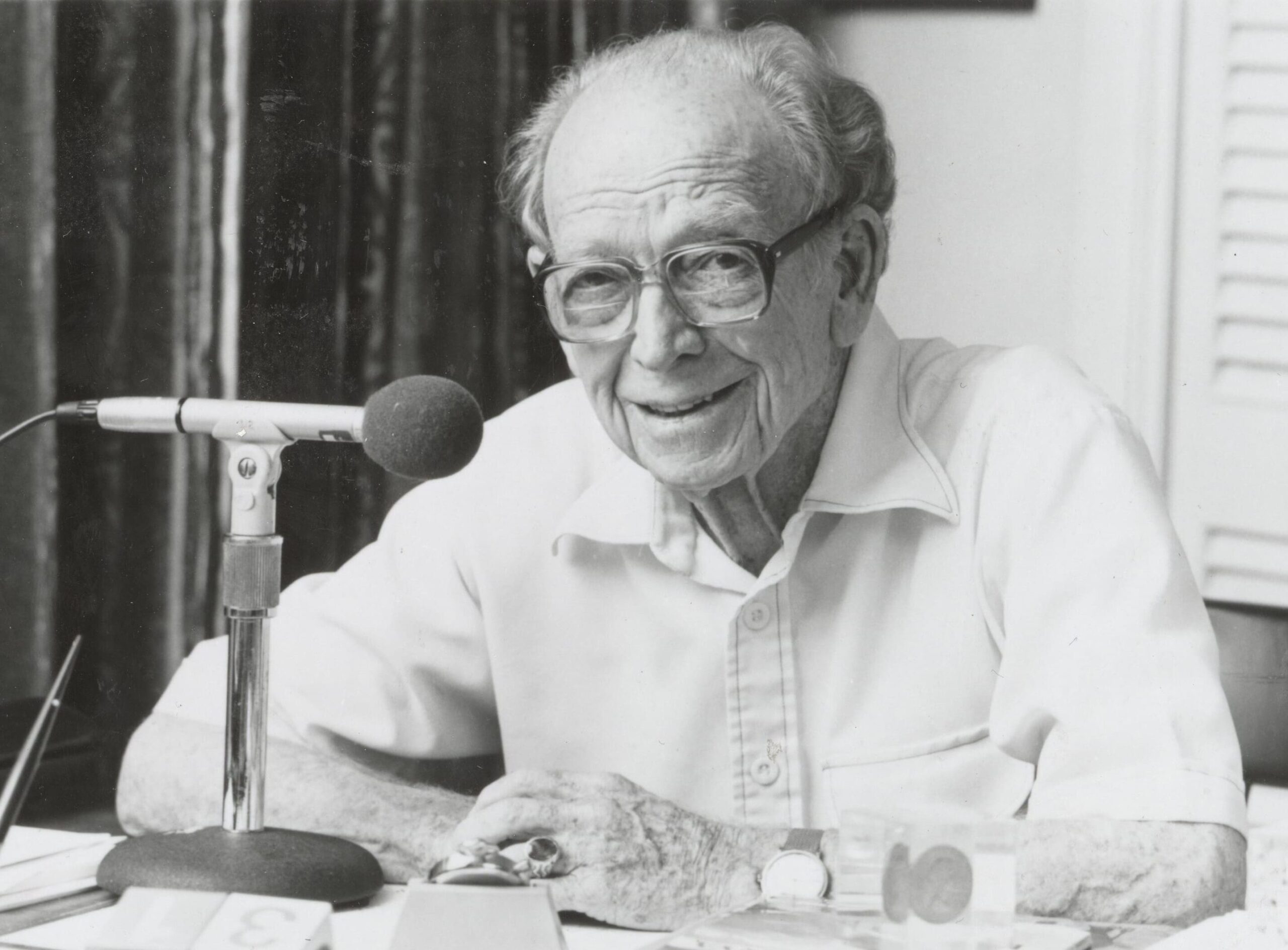

January 2, 1981
Sports Announcer Red Barber began weekly conversations on National Public Radio’s “Morning Edition” with host Bob Edwards. Barber broadcast from his Tallahassee home in Waverly Hills.
February 6, 1981
WFSU-FM begins to air National Public Radio’s Morning Edition program.
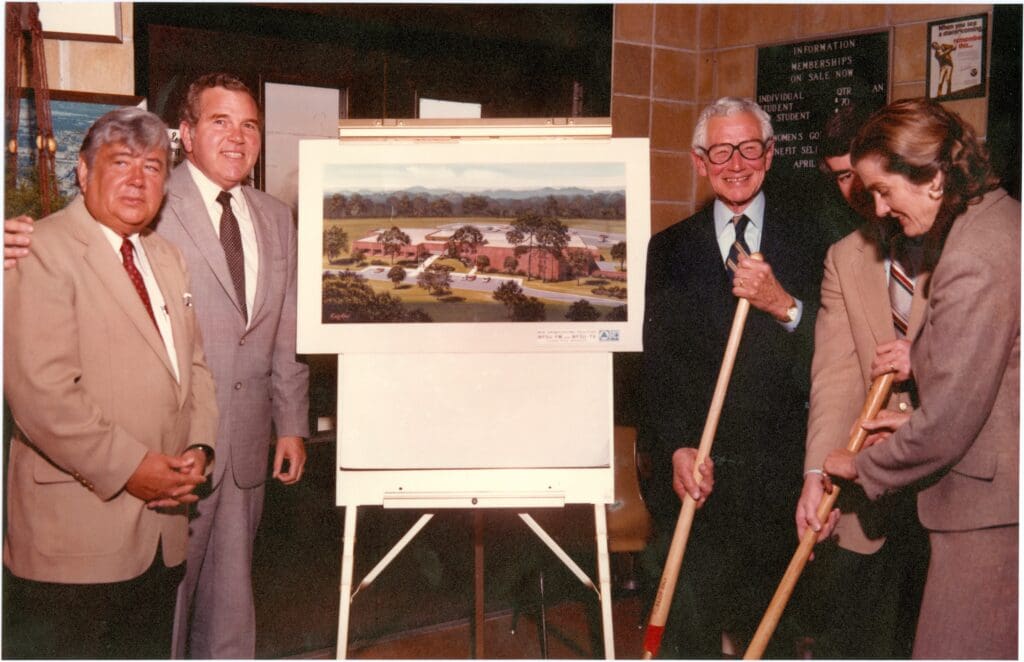

March 30, 1981
A groundbreaking ceremony was held for the new Public Broadcast Center. The new WFSU-FM and WFSU-TV buildings were to be located near the FSU Golf Course. Florida State University President Dr. Bernie Sliger was the Master of Ceremonies for the groundbreaking. Former Florida Governor LeRoy Collins provided the Keynote address.
April 1, 1982
WFSU-FM converts to a mostly all-classical music format, dropping other musical programs that from its schedule including the local long-running progressive rock program “Freeform.”
September 24, 1982
The first WFSU-FM Benefit Concert is held at Opperman Music Hall. Instructors from the FSU School of Music performed at the concert including pianists Carolyn Bridger, Leonidas Lipovetsky, and Alan Thomas. Also performing were bassoonist William Winstead, organist Michael Corzine, cellist Roger Drinkall, soprano Janice Harsanyi, clarinetist Fred Ormand, harpsichordist Karyl Louwenaar, and violinist Gerardo Ribeiro.
1982
WFSU-91.5 FM became the nation’s number one public radio station based on the percentage of available audience listening to the station.
January 1983
WFSU-FM moves into the newly completed FSU Public Broadcast Center. The new facility cost $5.5 million.
Photo Gallery of Construction at WFSU’s new Public Broadcast Center:
April 27, 1983
The Public Broadcast Center, with the new buildings for WFSU-FM and WFSU-TV, is dedicated in a special ceremony. The initial address for the PBC was 2561 Potsdamer Road. The station’s street and address were changed to 1600 Red Barber Plaza in 1993 after the death of Barber.
At the PBC building dedication ceremony in 1983, the featured speaker was Sharon Percy Rockefeller, Chair of the Corporation for Public Broadcasting. Florida State University President Bernie Sliger presided over the event. Also speaking was Dr. Barbara Newell, Chancellor for the State University Board of Regents. Musical selections were provided by local musician Velma Frye who later became the host of WFSU-TV’s Studio A music program.
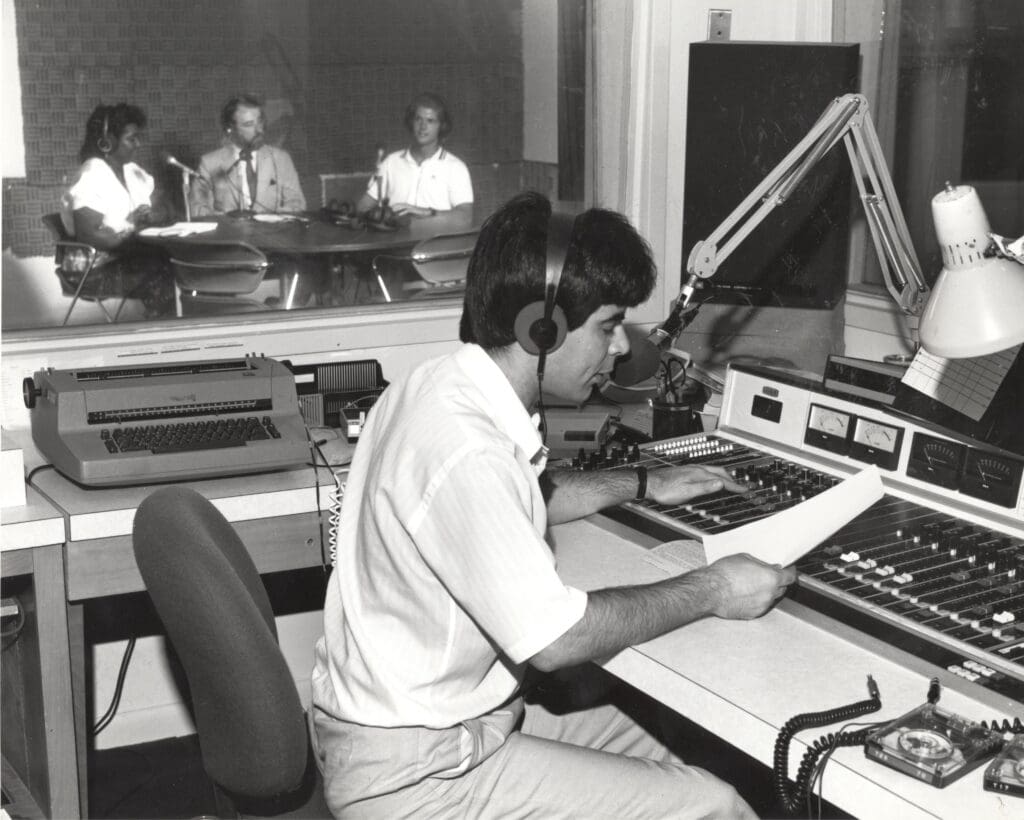

April 13, 1984
The State of Florida House of Representatives passed Resolution 1170 commending WFSU-FM on its 30th Anniversary. (Note: WFSU-AM had begun in 1949 while WFSU-FM began in 1954 so sometimes two different dates were celebrated over the decades.)
May 6, 1988
WFSU-FM hosts the first live state-wide toll-free radio call-in show with Senator Bob Graham. Broadcast through Florida Public Radio Network stations around the state. Hosts Patricia Kemp (WUSF-FM News Director), Madison Hodges (WFSU-FM General Manager), Jo Miglino (former NPR bureau chief for the Southeast), and Phil Burger (WUWF-FM News Director).
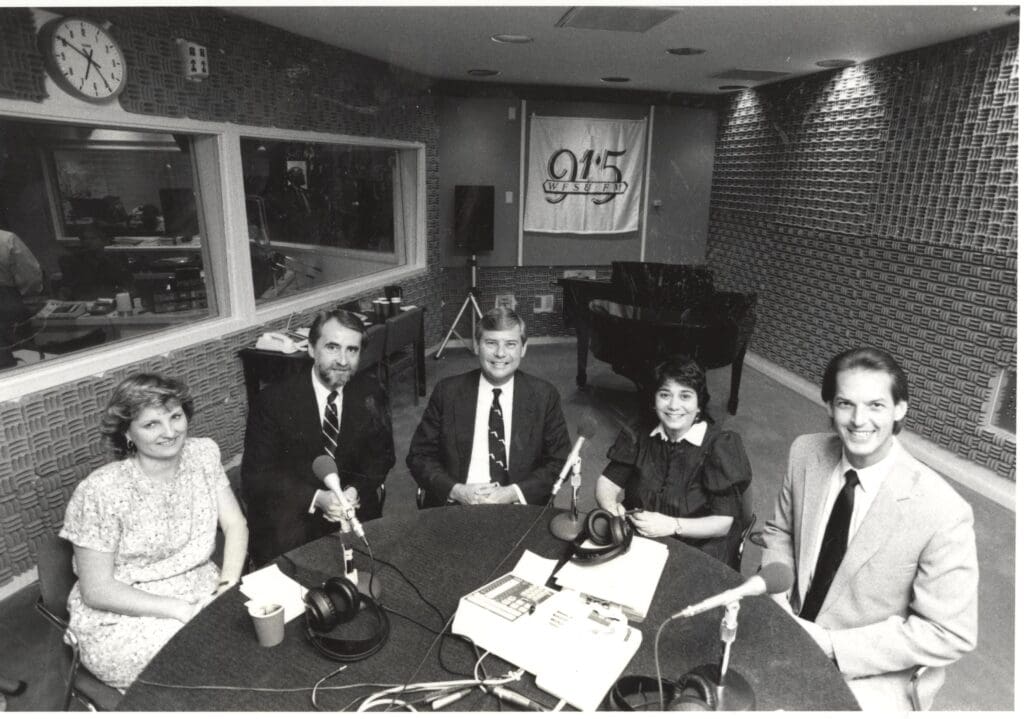

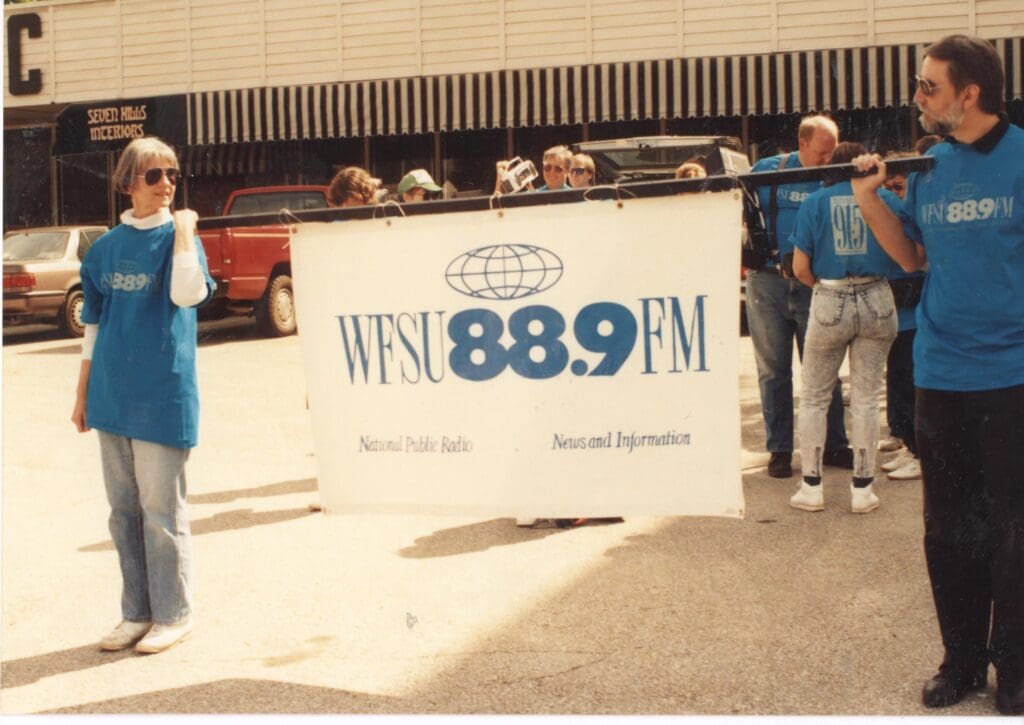

October 13, 1990
At midnight, WFSU-FM moved from 91.5 to 88.9 and became all news and information programming. Meanwhile, the old 91.5 radio channel changed its call letters WFSQ-FM, and the format became all music and entertainment. The new 88.9 started with a wattage of 95,000 using a 1248-foot tower. In the spring of 1991, the old 91.5 channel doubled its wattage from 50,000 to 100,000 Watts from a 662-foot antenna.
October 19, 1990
Bob Edwards is joined by Red Barber for a live face-to-face broadcast of their Morning Edition show from the Center for Professional Development at FSU. For the previous 9 years, the duo had done the program long-distance, Edwards in Washington and Barber in Tallahassee. WFSU-FM hosted the unique in-person live radio show as a breakfast fundraiser called “Breakfast with Red and Bob” for the station. Tickets were $75 each.
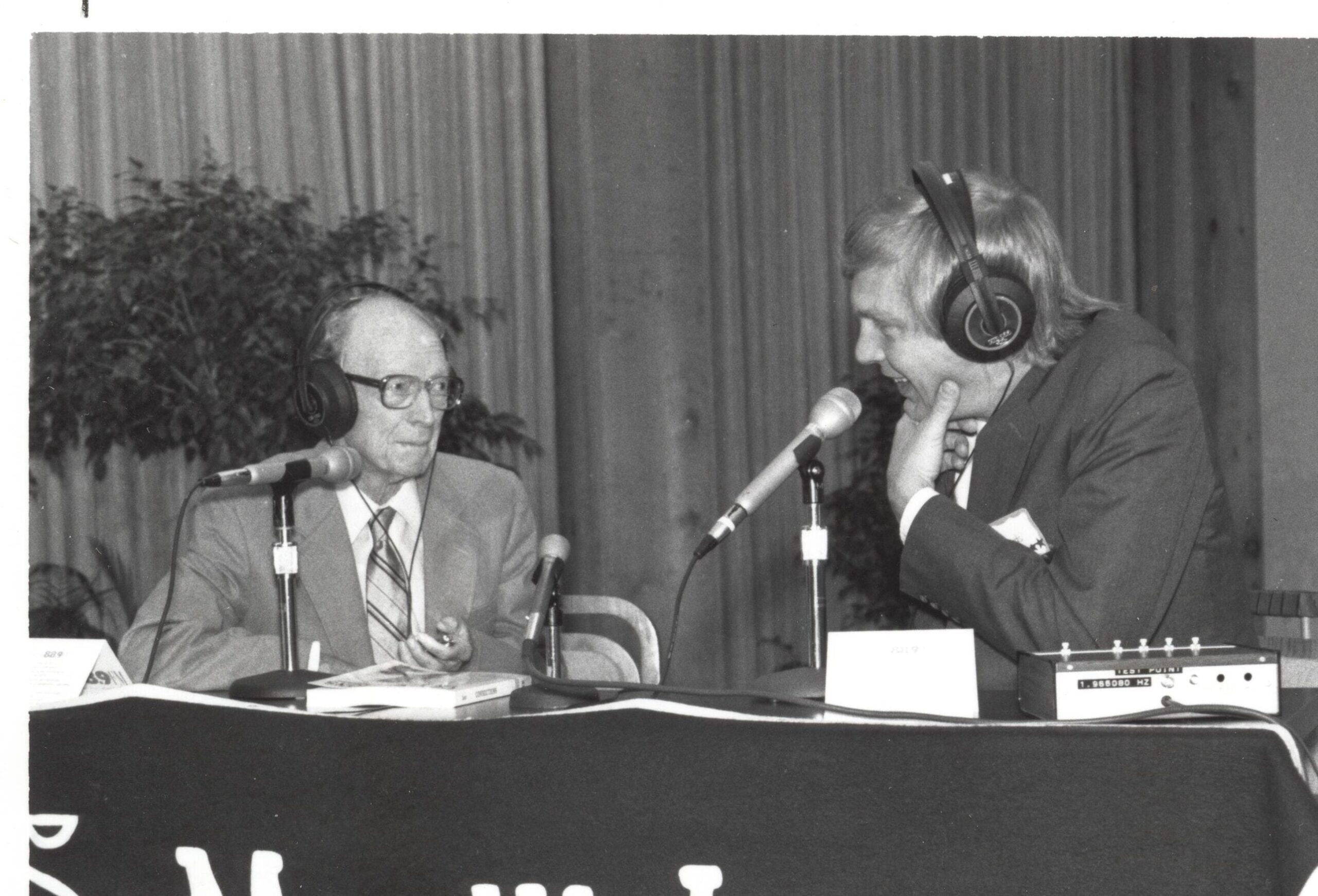

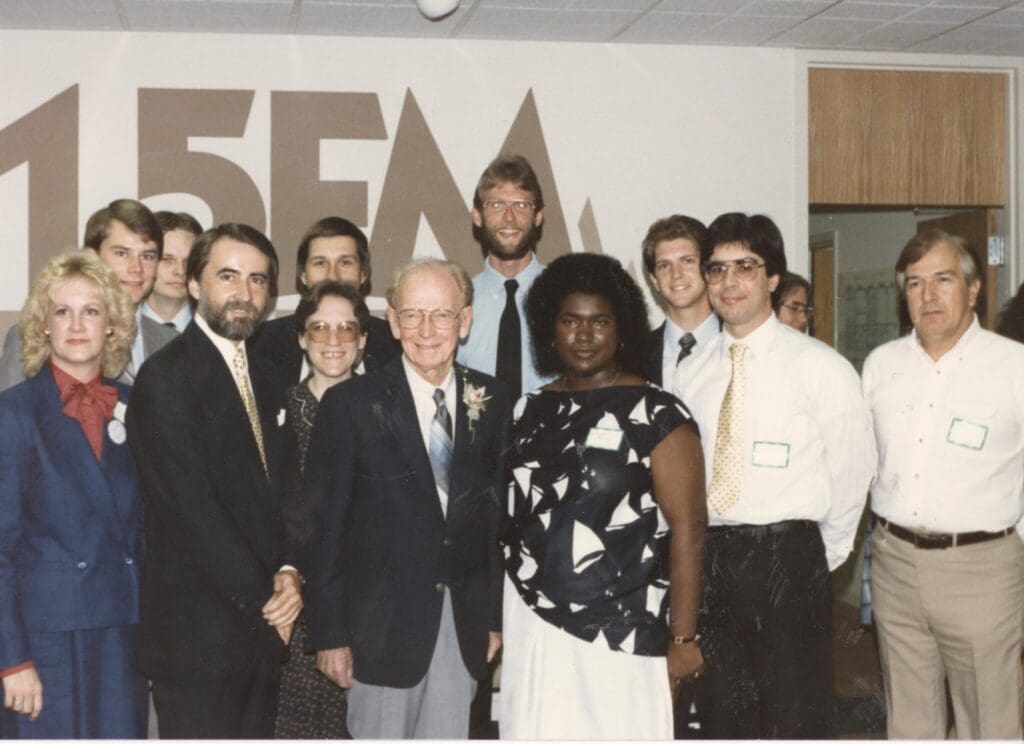

October 22, 1992
Legendary sportscaster, author, and NPR contributor Red Barber passed away in Tallahassee.
November 4, 1993
Florida State University gives Red Barber a posthumous honorary degree. Also, the Public Broadcast Center that houses WFSU-FM and WFSU-TV officially renames its section of streets to Red Barber Plaza and Red Barber Way. Bob Edwards, Morning Edition host and friend of Red Barber, attends the event.
March 1996
WFSU Radio expands its coverage area to offer a third full power station. WFSW-FM debuts on 89.1 in Bay County from Panama City.
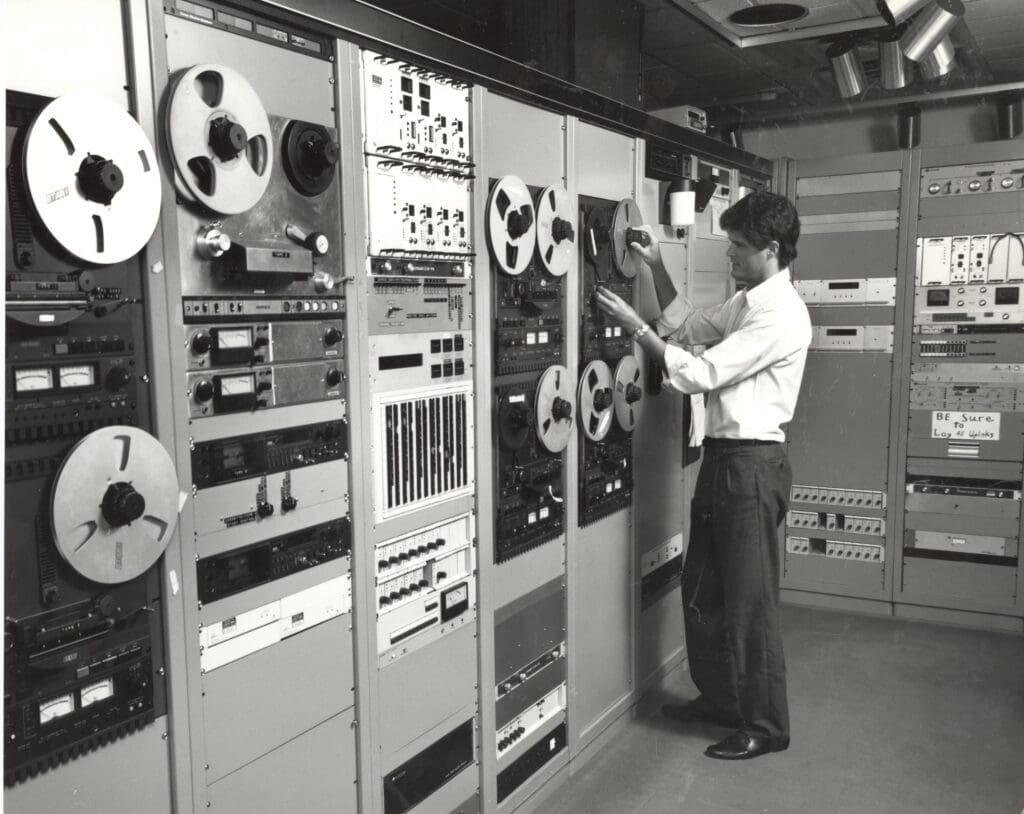

October 24, 1996
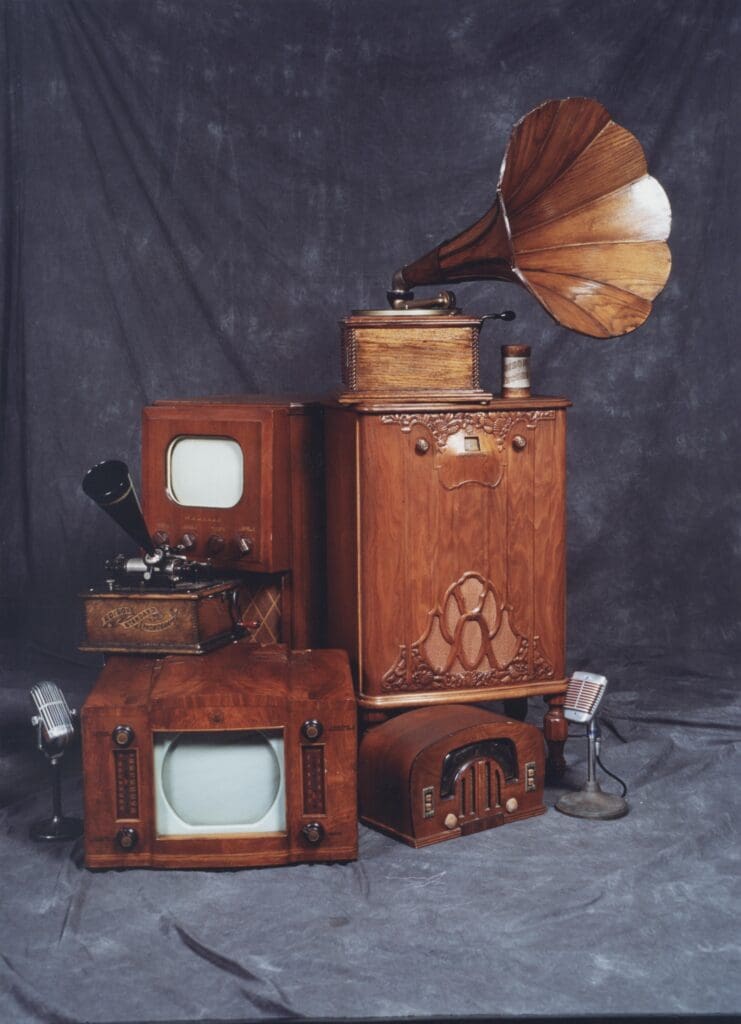

A dedication ceremony is held for the Kirk Collection containing close to 300 vintage radios and TVs to FSU’s Public Broadcast Center to create a special museum at the PBC. Jim and Biddie Kirk donated the collection. Jim Kirk, an early graduate of FSU, had helped grow WFSU-FM in the early years as the station’s game announcer during the FSU Football games that aired exclusively on WFSU-FM.
As part of the creation of the museum, the breezeway between the WFSU-FM radio building and WFSU-TV building was enclosed.
2000
Ronald J. Ebben goes on the air for the first time at WFSU.
April 2003
WFSU Radio expands again. WFSL-FM begins operation at 90.7 on the radio dial providing Classical Music to Thomasville, Georgia.
April 8, 2005
NPR’s Ira Flatow hosts his program “Talk of the Nation: Science Friday” from Florida State University’s campus before a live audience at the Nancy Smith Fichter Theatre at Montgomery Hall.
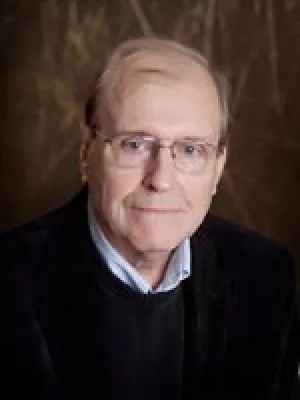

March 20, 2009
NPR’s Ira Flatow hosts his program “Talk of the Nation: Science Friday” for the second time from FSU’s campus before a live audience in the Fallon Theatre.
April 27, 2018
Long-time host Ronald J. Ebben retires after 18 years on WFSU-FM.
Suzanne Smith is Executive Producer for Television at WFSU Public Media. She oversees the production of local programs at WFSU, is host of WFSU Local Routes, and a regular content contributor.
Suzanne’s love for PBS began early with programs like Sesame Street and Mister Rogers’ Neighborhood and continues to this day. She earned a Bachelor of Journalism degree from the University of Missouri with minors in political science and history. She also received a Master of Arts in Mass Communication from the University of Florida.
Suzanne spent many years working in commercial news as Producer and Executive Producer in cities throughout the country before coming to WFSU in 2003. She is a past chair of the National Educational Telecommunications Association’s Content Peer Learning Community and a member of Public Media Women in Leadership organization.
In her free time, Suzanne enjoys spending time with family, reading, watching television, and exploring our community.

